 Hello there! 😀
Hello there! 😀
|
|
|
|
|
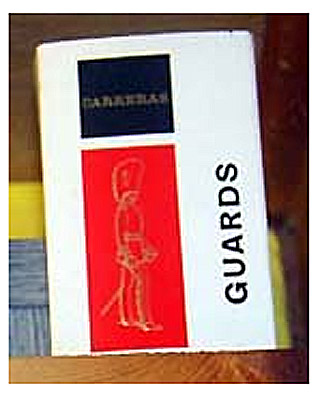
Some doubts surfaced occasionally - for example, my conscience was pricked when I worked on ad. campaigns for a cigarette brand in the days when tobacco's links with cancer were just becoming known; and I felt quite uneasy when confronted with the realities of animal slaughter at a client's abattoir, though I admit my subsequent spell as a vegetarian lasted only three weeks. The point is, there were always compensations. Advertising paid the mortgage - and it soon became the devil I knew. You can't beat the system. So I stayed.
But one particular experience brought home to me what I'd got myself into. Business wasn't going too well at Washer Fox Coughlan, where I was a board director in our Soho-based London agency. Although we'd had successes, like relieving Saatchi & Saatchi of their IBM business, we felt we needed some kind of figurehead to raise WFC's profile.
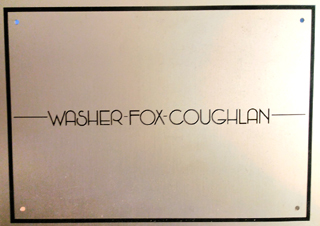
We discussed maybe bringing in a 'silver fox' character - someone older, with contacts, who might make useful introductions. After many conversations on the grapevine and with headhunters, the right man came to the surface ...
The silver fox in question was William Shelton. To give him his full title, he was William Shelton MP, Conservative member for Streatham, later to become Sir William on receiving his knighthood in 1989. His appointment as our Chairman was quite a coup: he'd already established a good reputation in the ad. business, first at CPV and later at high-profile agency Fletcher Shelton Delaney. Although Bill had held only junior posts in government, he was identified in the Tory party as being one of the "plotters" who undermined Prime Minister Edward Heath's position and, as one of her two campaign managers, helped secure Margaret Thatcher's leadership of the Conservative Party, as recorded in his obituary in the Daily Telegraph. (Ironically, it was more subterfuge - the 'stalking horse' plot, led by Sir Anthony Meyer - that would eventually bring about the end of Thatcher's own career. The Tories do seem to love their plots).

A sitting Member of Parliament, active in the House, Shelton was soon instrumental in attracting some high profile business to the agency. As is still the case with numerous MPs, he was in receipt of several income streams outside his work in the Commons. Bill's role with us was just one more to be added to his entry in the Register of Members' Financial Interests. It's true that he did tend to rather dominate client meetings, often addressing his orations to an audience of potential customers who weren't accustomed to being talked to as though they were in the Chamber at Westminster or at a constituency meeting. (I recall judicious use of a sharp tap on the shin under the table being made on more than one occasion ...). But frequently these were people with whom he had pre-established relationships, already attuned to his declamatory style.
So here was I, a Left wing "boy" from the
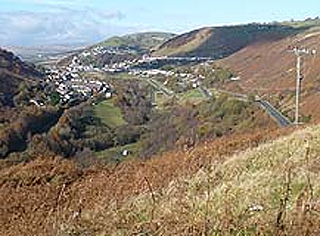
I hated Margaret Thatcher with a vengeance, and still do. Her anti-Left, deregulatory, privatising agenda wiped out key industries and devastated many local communities. If I'd once "got started" on this at work, my image amongst the rest of the board would have been shot to pieces. The trick was to keep my lip buttoned on the subject, something I managed to do pretty successfully at the agency, though sometimes down the pub with media sales people my true self would make an appearance.
My main focus was on getting the job done, on a day-to-day basis. Paying the mortgage, looking after the kids. These things always came first. But being such a close associate of someone who'd helped bring a character so vile as Thatcher to power was never out of my mind in meetings with him. On the other hand, Bill himself was charming company and we got on very well. He took me for a meal at the Members Tea Room at the House of Commons where I probably saw more famous faces in that one hour than I'll have seen in the rest of my life!

He told me all about the way members of Thatcher's "family", as she called her inner circle, engineered the unseating of Edward Heath in February 1975. The key seems to have been that everything was done in utter secrecy. Soundings taken by Heath's backers amongst Tory MPs didn't reflect the true situation. Between them, her campaign managers succeeded in hoodwinking Heath's team into a false sense of security. Thatcher thanked William Shelton in her press conference immediately after her election as Party leader. I never did get to the bottom of why he wasn't appointed to the Cabinet, though he did get to be Parliamentary Under-Secretary at the Department of Education and Science; and it's noteworthy that he was an enthusiast for Europe and opposed the appalling poll tax. Here's a screenshot of William (left) with Airey Neave (who met a violent and tragic end at the hands of the INLA), shortly after their success in getting Thatcher elected Tory leader.
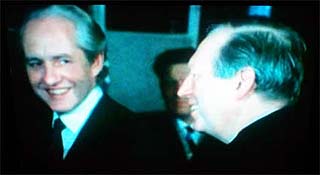
Eventually we linked up with a European seven-agency group, GGK, William retaining his role as Chairman for a time, whilst I became Executive Group Media Director. After a couple of years, I myself was victim of a plot (!) and left London for what turned out to be a much more pleasant and civilised life in Cambridgeshire.
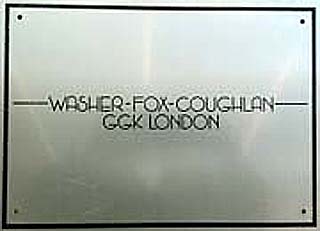
Despite our political differences, I was saddened to read of William's ill fortune at the end of his life and his death from Alzheimer's in 2003.

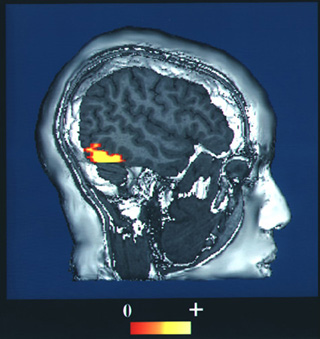
It was interesting to read recently of a psychological condition faced by Dame Joanna Lumley, who has prosopagnosia. Face blindness is not something I suffer from, but, like many others no doubt, I've experienced that unsettling experience of being unable to put a name to a face.
More ...
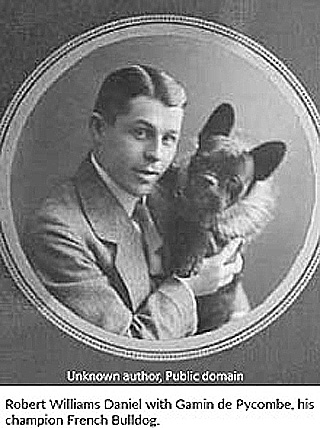
The loss of life when the Titanic sank tends to be measured solely in human terms. But there was other life on board the Titanic, aside from human life ...
More ...
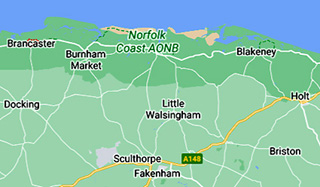
If we want rock pools, we know where to find them elsewhere, but Brancaster offers the real deal as far as beaches are concerned. The tide was in when we got there but it seemed to recede quickly during our visit.
More ...

Now's the time to begin thinking about the kind of traditional foods that have helped people get through the icy blasts that'll soon arrive (mark my words!). Forget about all the pre-packaged convenience mush that's offered up in the supermarket freezer cabinets ...
More ...
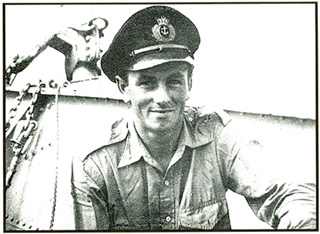
German submarine U-506, under the command of twenty-eight-year-old Kapitänleutnant Erich Würdemann, is knifing through the North Atlantic on her way back to base at Lorient on the north-west coast of occupied France, accompanied by another, smaller U-boat.
More ...
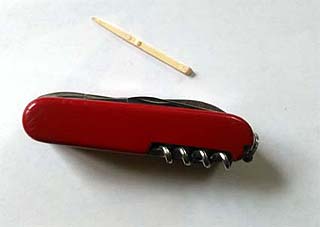
So there you are in Monte Carlo for the superyacht show, suddenly awake in your sleek, 160 metre, £180m boat. It's 2.45 in the morning. The staff have all gone to bed, but you get a sudden craving for a glass of Château Pétrus. A real urge. And why not? The 2016 vintage is only £22,000 a throw. You open the cabinet and take out a bottle. But, oh no! - you can't find a corkscrew! Fortunately, you have with you ...
More ...

Hidden away behind recent media stories about Ukraine, parties, the cost of living and Covid was the announcement of one of the most significant medical breakthroughs for a very long time. Scientists at the University of Cambridge have used DNA data from 12,222 NHS cancer patients to identify "mutational signatures", a kind of personal record of the causes of each patient's cancer.
More ...
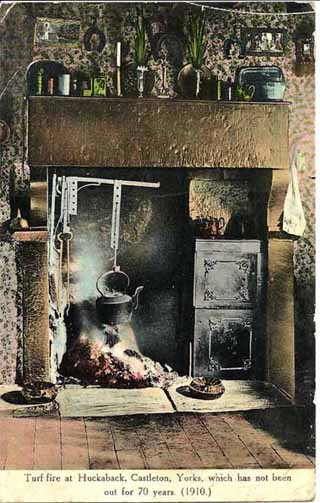
I remember my Dad making a turf fire in the garden. He'd start by just constructing a small mound of dry paper, twigs and other combustibles; then set it alight and gradually add turves around it, grass side downwards, until it was transformed into what looked like a pyramid of earth.
More ...
Now, for most people the answer will be "Who?" In a way, that's surprising, given the potent mixture of controversy, praise, delight and horror his works have attracted over the last couple of hundred years. His depictions often got him into hot water and unsought controversy shifted attention away from his genius. Some of his later works failed to approach the magnificence of his earlier achievements and his star was in decline for many years after his death. It's only recently, in the last thirty years or so, that it's begun to regain its original brilliance.
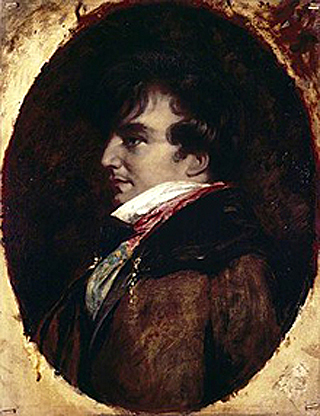
Etty was prolific, his 2,000-odd1paintings encompassing a range of subjects, most often portraying a famous historical scene or an interesting character, as well as occasional commissioned portraits. His comparative obscurity - and to a degree his notoriety - is explained, first, by the fact that his overwhelming focus was on the female nude; and secondly (in my view) by the fact that he was just too good at painting the nude. And that puts him in a quite unique position ...
He was dedicated. He found his metier early in life and pursued his chosen career path doggedly. Whilst it's clear that he possessed innate talent, he also had the good fortune to be supported by relatives and to be tutored by established, accomplished artists. He learned and continued to develop his craft through lifelong study and hard work. At the age of sixty-one, when a student asked for guidance, his simple advice was "practice as much as you can!"; but he was often much more forthcoming.2 His greatest technical strengths were his ability to paint realistic flesh tones, to produce figures which were both lifelike and eye-catching in form and proportion and his prowess in appropriate composition and illustration. Nonetheless, he didn't achieve his goal of being elected a full member of the Royal Academy until the age of forty-one (coming ahead of one John Constable in the poll).
An early great success was The Coral Finder (1820).
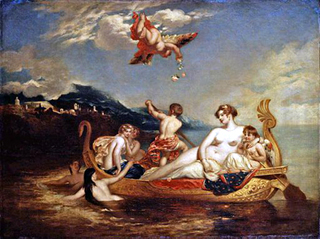
It was this painting and the magnificent Cleopatra's Arrival in Cilicia (also known as The Triumph of Cleopatra) the next year, that finally established Etty in the top rank of English painters of the time.
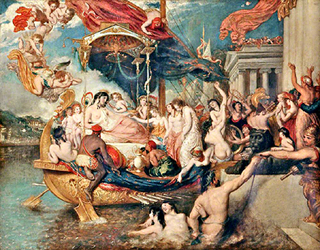
In his historical works, Etty used his talents to bring to life important mythical and literary events from the past. In so doing, he discovered that there was an unsatisfied market for large (sometimes gigantic!), illustrative, well-painted works of classical scenes: in other words, he had what marketing people would call a Unique Selling Proposition (USP).
More than this, whether knowingly or unknowingly, deliberately or as a by-product, he frequently brought out new significances in his subject matter. And his all-too-realistic depictions had numerous other dimensions, an aspect explored in a recent stimulating discussion of one of his more famous works, The Sirens & Ulysses, in an edition of the
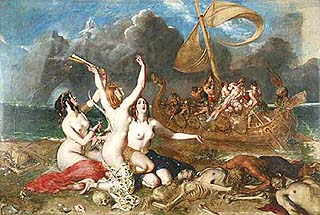
These eminent contributors highlight some really interesting points, including the effect of the "scientifically precise" rendition of the rotting corpses in the foreground of the painting; the way classical mythology as subject matter offers an "alibi" for the inclusion of nude figures; and how Etty "amplifies" the sensuality of the female figures. In my opinion it's this amplification which is the root cause of much of the controversy surrounding his work: whilst there is rarely unnatural exaggeration of the proportions of limbs, bottoms and breasts, the angle selected or centre of interest can on occasion maximise the erotic component of the overall aesthetic, uncomfortably for some viewers.
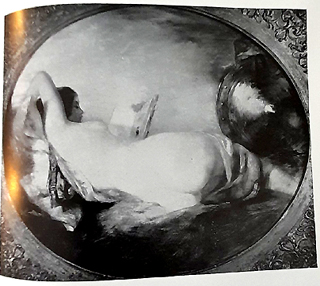
But why the focus on the nude? It may well have been in part to do with Etty's need to earn a living. He was playing to his strengths. His endless evening attendances at the Life School - throughout his life, "a perpetual student"4 - must have instilled in him a forensic familiarity with the unclothed human form, both female and male. In his autobiography, quoted in Gaunt, he describes in intricate detail stages in the development of his techniques for reproducing the human figure and authentic skin tones; for instance: "First night, correctly draw and outline the figure only; Second night, carefully paint in the figure (with black and white and Indian red, for instance): the next, having secured it with copal, glaze then scumble on the bloom; glaze in the shadows and touch on the light carefully".5
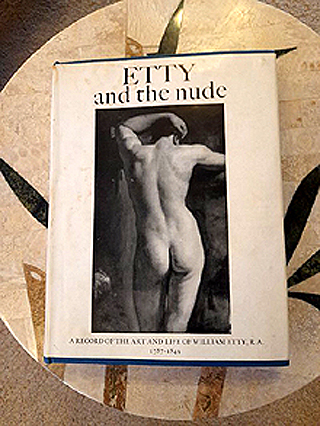
Although Mary Beard's "alibi" point in the podcast is well made, nudity could be an off-putter to potential clients, as explained by Gaunt: "Sir Francis Feeling was concerned about the draperies in the Cleopatra and induced the painter to make some additions. Other [sic] who had bought a picture out of genuine artistic appreciation were disturbed to find that it was wrongly interpreted by relatives and friends; and the request for more drapery was frequent. The father of a family, desirous of purchasing a picture, could not think of letting his wife and grown-up daughters see such a work as Nymph and Faun Dancing and suggested a delicate compromise - 'an elegant female figure with bare shoulders ... perhaps one side of her bosom bare'".6
Such personal concerns were as nothing in comparison to the adverse insinuations and criticism often visited on him by the press and indeed some of his peers. The painter C.R. Leslie took Etty to task for his "rejection of draperies" and his "peculiar treatment and choice of subject". Many whispered in gallery corridors that his nude paintings and his constant attendance at Life School - where he paid such close attention to the naked models - were evidence of a lascivious nature. Etty firmly rejected this: "People may think me lascivious, but I have never painted with a lascivious motive", he protested in his autobiography. "If I had, I might have made great wealth ... if in any of my pictures an immoral sentiment has been aimed at, I consent it should be burnt".
It needs to be remembered that in his enormous output there are many fine paintings which don't include female nudes. There are numerous male nudes as well as conventional, commissioned family portraits and character studies. (Some critics have remarked that drapery and clothing was not his strongest suite).
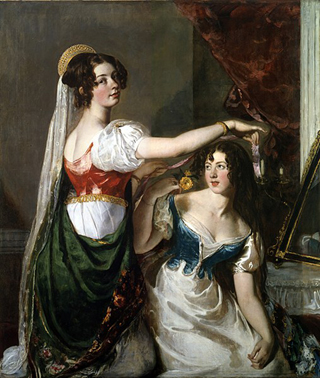
Etty had quite a strong, if somewhat confused, moral conscience, leaning towards Catholicism, but quoted as saying that "I shall live and die a Protestant". He preferred to look back in time. His religious cast of mind was coupled with a deep fondness for the Middle Ages and a distaste of progress. Gaunt and Roe6 quote him in 1835 foreseeing no future in inventions such as the steam engine. "So, we, grovelling, despise and forget the genius of the olden time and boast of achievements far surpassing them which will, in my opinion, be forgotten long ere the Dark Ages shall pass away". (His body of work and such comments place Etty firmly in the Romantic movement, with its glorification of Nature).
And when he surveyed the vast canvas of art history, Etty saw that he was simply one of many great artists inspired by the naked female form. "Finding God's most glorious work to be WOMAN, that all human beauty had been concentrated in her, I resolved to dedicate myself to painting - not the Draper's or Milliner's work,- but God's most glorious work, more finely than ever had been done". And to my mind his work should certainly be considered alongside other painters in the genre. Over the centuries, many of the supreme artists (one thinks of Titian, Rubens, Rembrandt, Durer, Ingres and indeed Degas, who post-dated him) have painted nudes. Plenty of the world's favourite paintings feature unclothed females ...
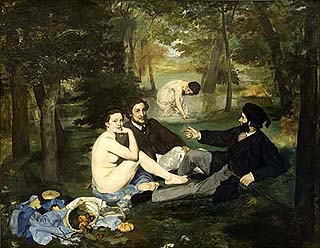
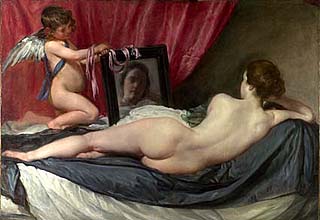
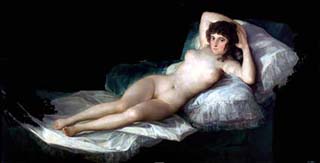
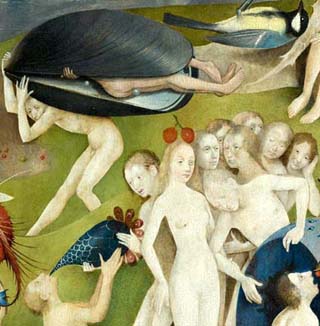
And yet, inexplicably, few British artists have been attracted to, or comfortable with, painting the nude, especially in its classical style. "Before Etty's arrival, England had nothing to offset in nude-painting the tremendous performance of Titian or Paul Veronese", wrote Gaunt and Roe. Does this say something about the British psyche? If fame is the sole measure of importance, Etty may be regarded as only a minor figure in the history of British art. As Sarah Burnage, then curator of a 2011/12 exhibition of Etty's work at the York Art Gallery, in introducing the exhibition, admitted: "Today he's largely forgotten".
Whilst undoubtedly true, to me this seems ludicrous. It's undeniable that his powers faded slightly towards the end of his life, but there are so many stunning works in his whole canon that we really should rank him alongside the Old Masters that he himself so much admired.
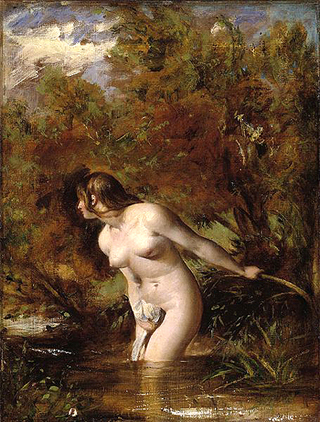
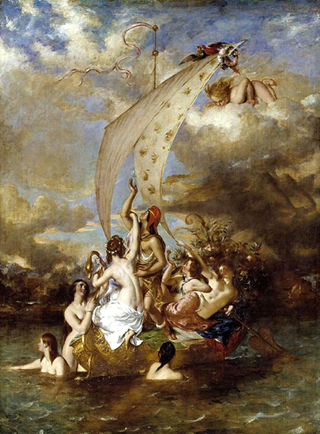
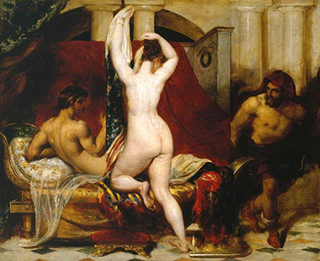
Notes
1 Gaunt, William and Roe, F. Gordon: Etty and the Nude (Leigh-On-Sea, Essex: F. Lewis, 1943 - temporary war address)
2 Example: "A few colours; Naples yellow, light red, Indian red, a little vermilion, lake, Terre verte, - or blue, - raw umber, burnt ditto, and black; are about enough. The application, practice must give you. As to the vehicle to paint with: a little sugar of lead, finely ground, about the size of a bean, rubbed up with your palette knife; in a teaspoonful of mastic varnish. Add to this two spoonfuls of cold drawn linseed oil. Mix them well up together. If you like, add a little spirits of turpentine, as much or as little as you please. And with a large brush rub over the canvas or picture you have to paint on ... this is a vehicle that will keep the flesh tints pure".
3 British Art Talks podcast, Paul Mellon Centre For Studies In British Art; discussion between Anna Reid Research Fellow at the PMC, Professor Mary Beard, Classicist, Newnham College, University of Cambridge and Cora Gilroy-Ware, art historian, author of The Classical Body in Romantic Britain.
4 Gilchrist, Alexander: Life of William Etty, R.A (np)
5 Gaunt, ibid.
6 Gaunt, ibid.
Credits
Self portrait, 1825, (c) Manchester City Galleries; Supplied by The Public Catalogue Foundation
The Sirens & Ulysses, 1837, 442.5 cm (14 ft 6.2 in) by 297 cm (9 ft 9 in), (c) Manchester City Galleries; Supplied by The Public Catalogue Foundation; source - Wikipedia
Cleopatra's Arrival in Cilicia or The Triumph of Cleopatra, 106.5 cm (41.9 in) by 132.5 cm (52.1 in), Lady Lever Art Gallery - Wikipedia
The Coral Finder: Venus and her Youthful Satellites, 74.4 x 98.58 cm, source unknown - Wikipedia
Others - all public domain - Wikipedia
Note: There's lots of other material on my archive blog site, which I launched in 2014. You can find it here.